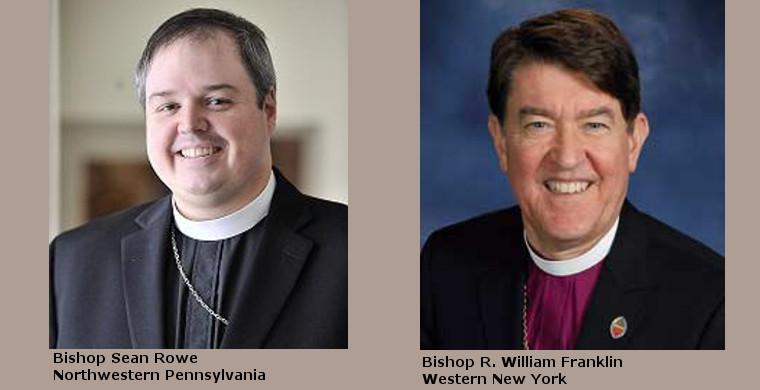Two Episcopal Dioceses to Share One Bishop
Is a merger coming?
By David W. Virtue, DD
www.virtueonline.org
Sept. 18, 2017
The bishop of the Diocese of Western New York, R. William Franklin, has announced he is retiring. The diocese is proposing to elect the Rt. Rev. Sean Rowe, Bishop of Northwestern Pennsylvania, as provisional bishop, at Western New York's diocesan convention in 2018. Franklin said he made the decision to retire on April 3, 2019, which is the date required by the current Canons of the Episcopal Church.
With the consent of both Standing Committees, Bishops Franklin and Rowe discussed with clergy a plan for the two dioceses to consider the possibility of a shared future. (This is code for juncturing).
Most recently Rowe (who is the youngest bishop in TEC) was called upon to oversee the Diocese of Bethlehem as provisional bishop after the failed occupancy of Bishop Paul Marshall, who had run the diocese into the ground. He left in 2013. In July of this year, (some four years later), the diocese announced it was launching nominations for a new bishop.
Now apparently, Rowe has been called upon to step into another failing diocese to help them out. This time it is Western New York, a diocese separated by the Diocese of Central New York.
Recent figures reveal the Diocese of WNY to be in numerical decline both in ASA, membership, baptisms and confirmations, with the most significant figure being the rising number of deaths. Last year the diocese claimed a total of 231 combined baptisms and confirmations, while burials totaled 276. Baptisms have dropped 40%; ASA has dropped from 5143 to 2994 a loss of over 52% from 2005 to 2015!
The average age of TEC and ELCA pastors is 64 and they make up 52% of the diocese. Only 14% are under 54 years of age.
Another startling, but significant figure, is that the number of full time priests is a mere 31%! Fully 70% of diocesan parishes cannot afford a full-time paid rector! These include part time priests of one congregation (39%); priests in yoked churches or parish clusters (9%) and non-stipendiary priests totaling 20%.
By any measurable standard, this is the kiss of death for the diocese. Franklin is leaving a sinking ship. You cannot have an ASA decline of that magnitude and hope to survive beyond the next five years.
The high retirement figure is even more startling simply from a statistical point of view, as there are no new young parish priests coming forward to fill retiring pulpits. Even if they could be found, there are not enough congregations that could pay them a full-time salary. The Episcopal Church priesthood might be the least desirable job now or in the foreseeable future. If you leave any Episcopal seminary in debt, there are only a handful of parishes that could pay a priest enough to repay his debt and live at the same time. Add a wife and children and the wife would have to take a job to supplement her husband's (lack of) income.
Bishop Rowe's own diocese is barely hanging by a thread.
His diocese had an ASA in 2005 of 2022, now it is down to 1340, a drop of 37% since 2005. The diocese can only claim 22% full time priests (about six rectors) for 31 congregations. The number of part-time priests of one congregation total 17%; priests in yoked churches or parish clusters number 17% while non-stipendiary priests number 43%, twice as many full-time priests.
These figures can be replicated in most dioceses across the country with only a handful of notable exceptions like Dallas and Texas.
END














